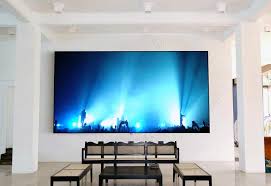Unraveling the Svga Resolution in Projectors: A Comprehensive Guide
Introduction
In the world of projectors, making the right choice often means understanding complex terminologies and getting familiar with different specifications. One term you are likely to come across often is SVGA resolution. This guide will walk you through the fundamentals of SVGA resolution and why it's worth considering for your projector.
What is Resolution in Projectors?
Projector resolution pertains to the image detail and quality a projector can produce. It essentially depends on the total pixel count a device can display. To gain a more cogent understanding, we can break down the concept as follows:
- Pixel Count: Resolution is simply the aggregate of vertical and horizontal pixels a projector can display. For instance, resolutions will be provided as 800x600 or 1024x768, indicating the number of horizontal and vertical pixels respectively.
- Image Quality: Higher resolutions carry more pixels, contributing to precise, sharper, and clearer visuals. Simply put, more pixels translate into better image quality.
- Resolution Variations: Resolutions can vary considerably, from the modest 480p (VGA) to the crisp 4k Ultra HD. Understanding the different types of resolution will help you select a projector that suits your optic standards and reflects your desired quality.
In a nutshell, resolution in projectors is a crucial determinant of image quality and visual experience. Choosing the right resolution based on your needs can tremendously enhance your viewing or presentation experience.
What Does SVGA Resolution Really Mean?
Understanding the term 'SVGA resolution' requires delving into the basics of projector technology. It is an acronym for Super Video Graphics Array and signifies a standard resolution that falls within particular parameters.

- Pixel Count: SVGA resolution translates to an array of 800x600 pixels. The relatively higher pixel count compared to older models improves image quality.
- Image Quality: Offering a substantial boost over the traditional VGA resolution (640x480 pixels), SVGA resolutions yield a more refined and detailed image, adding to the viewer's visual experience.
- Price Point: Affordability is a key charm of SVGA projectors. Despite the enhanced image quality compared to VGA, SVGA projectors fall within a reasonable price bracket.
Essentially, an SVGA resolution projector represents a golden mean, combining better image quality and affordability. It offers more detail than a standard VGA projector, making it an appealing choice for those looking for an upgrade on a budget. By arming yourself with this knowledge, you can make a more informed choice when selecting your next projector.
How Does SVGA Compare to Other Projector Resolutions?
Projector resolutions are usually a determining factor in the quality of projected visuals. SVGA, along with a few others like XGA, WXGA, Full HD, and 4K, encapsulates the most common resolutions you will encounter when looking for a projector. Let's take an inclusive look at how SVGA fits into the mix.

- SVGA: Often seen as a bringer of balance, SVGA (800x600 pixels) offers an admirable tradeoff between performance and cost. It's perfect for users who seek improvement over VGA but are not willing to splurge on higher resolutions.
- VGA: VGA (640x480 pixels) is the starting point for resolution standards. Its relatively lower pixel count compared to others translates to somewhat granular and less sharp visuals. Nonetheless, VGA projectors are highly affordable and suitable for very basic image projections.
- XGA: Jumping up to XGA (1024x768 pixels), you will notice a significant boost in image quality due to the higher pixel count. XGA projectors deliver sharper images than SVGA, but this comes at a slightly higher cost.
- WXGA: With WXGA (1280x800 pixels), your projector moves closer to the wide aspect ratio favored for movies and modern laptops. WXGA projectors outshine SVGA projectors in terms of visual quality, but they are more expensive.
- Full HD: Full HD (1920x1080 pixels) takes clarity and detail to the next level, offering finer image quality for a prime viewing experience. However, the cost of Full HD projectors is notably higher than their SVGA counterparts.
- 4K: At the top of the resolution hierarchy is 4K (3840x2160 pixels), known for unparalleled sharpness and detail. Splurging on a 4K projector guarantees the ultimate visual experience, but they are the most costly of the lot.
In essence, SVGA serves as an accessible middle ground, providing decent image quality for an affordable price. Reading beyond the lines, the choice of resolution boils down to your specific needs, the projector's intended use, and your budget. High-end options furnish unrivaled image quality, but the price could be a deal-breaker for many.
When is the Use of SVGA Resolution Projectors Optimal?
SVGA resolution projectors provide quality visuals and are ideal for specific usage scenarios, especially where high detail is not a prerequisite. When evaluating whether an SVGA resolution projector is the best fit for your needs, consider these circumstances:
- Classroom Settings: Whether it's a high school history session or a university lecture, an SVGA projector is perfect for educational environments. It provides sufficient clarity for text and picture-based presentations commonly used in teaching.
- Business Meetings: If you're presenting graphs, charts, and text to your team, an SVGA projector has got you covered. The 800x600 resolution ensures all details of your presentation are clear and visible to the audience.
- Casual Viewings: For casual home use or small get-togethers where high-definition video isn't a necessity, SVGA resolution projectors offer plenty of detail for enjoyable viewing.
However, for more detail-intensive applications, such as home theater setups, video exhibitions, or high-stake business presentations, seeking a projector with a higher resolution, such as XGA or WXGA, would be more optimal. These projectors provide finer detail, sharper images, and a better overall visual experience - albeit at a higher price point.
In conclusion, understanding your intended use for the projector can guide you towards deciding whether SVGA resolution is the optimal choice for you.
Why Should You Consider SVGA for Your Projector?
There are numerous reasons to contemplate buying an SVGA projector for your needs:
1. Budget-Friendly: Affordability is one of the primary advantages of SVGA projectors. They offer a reasonable balance between cost and performance, making them an appealing option for those on a budget.
2. Decent Image Quality: While not at the top of the resolution spectrum, SVGA (800x600 pixels) offers satisfactory image quality for standard presentations and projection needs. It is a significant upgrade from the older VGA resolution.
3. Device Compatibility: SVGA projectors exhibit a high degree of compatibility with various devices. This versatility makes them easy to set up and use in diverse scenarios.
In conclusion, if you're looking for an affordable, versatile projector with decent image quality, SVGA could be the perfect fit for your requirements. While it might not deliver the highest resolution, it provides a balance that suits many individuals and businesses.
Conclusion
Evaluating projector specifications, such as SVGA resolution, is a significant part of the projector selection process. Though it doesn’t offer the highest quality imagery, its affordability and decent quality performance make it a viable choice for many users.
Related FAQs about what is svga resolution on projector
Is SVGA resolution good for home theatres or only for business presentations?
SVGA resolution, offering 800x600 pixels, produces satisfactory image quality for business presentations. However, for home theatres where high-definition videos are primarily used, higher resolutions like Full HD or 4K might be more appropriate as they deliver superior, sharper imagery.
What are the main factors to consider when choosing a projector?
When choosing a projector, consider resolution, brightness, contrast ratio, intended usage, and its compatibility with devices. Additionally, the projector's price point and brand also contribute to the decision-making process, striking a balance between quality and affordability.
Can SVGA resolution projectors support high-definition videos?
SVGA resolution projectors can technically play high-definition videos, but the picture quality could be less satisfactory as the projector scales the video down to its native resolution (800x600 pixels), potentially reducing the video's clarity and sharpness.







